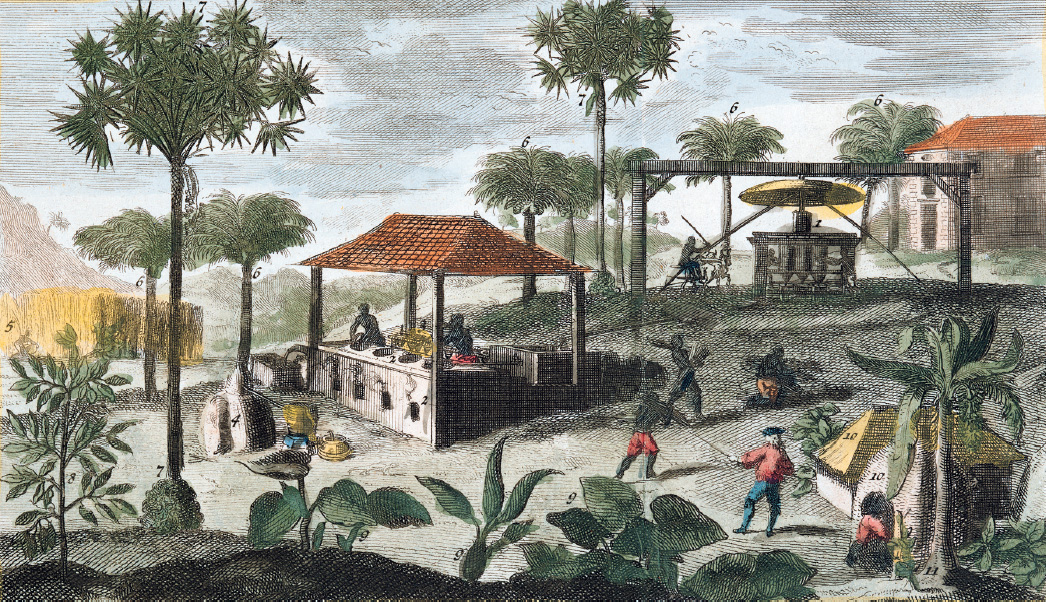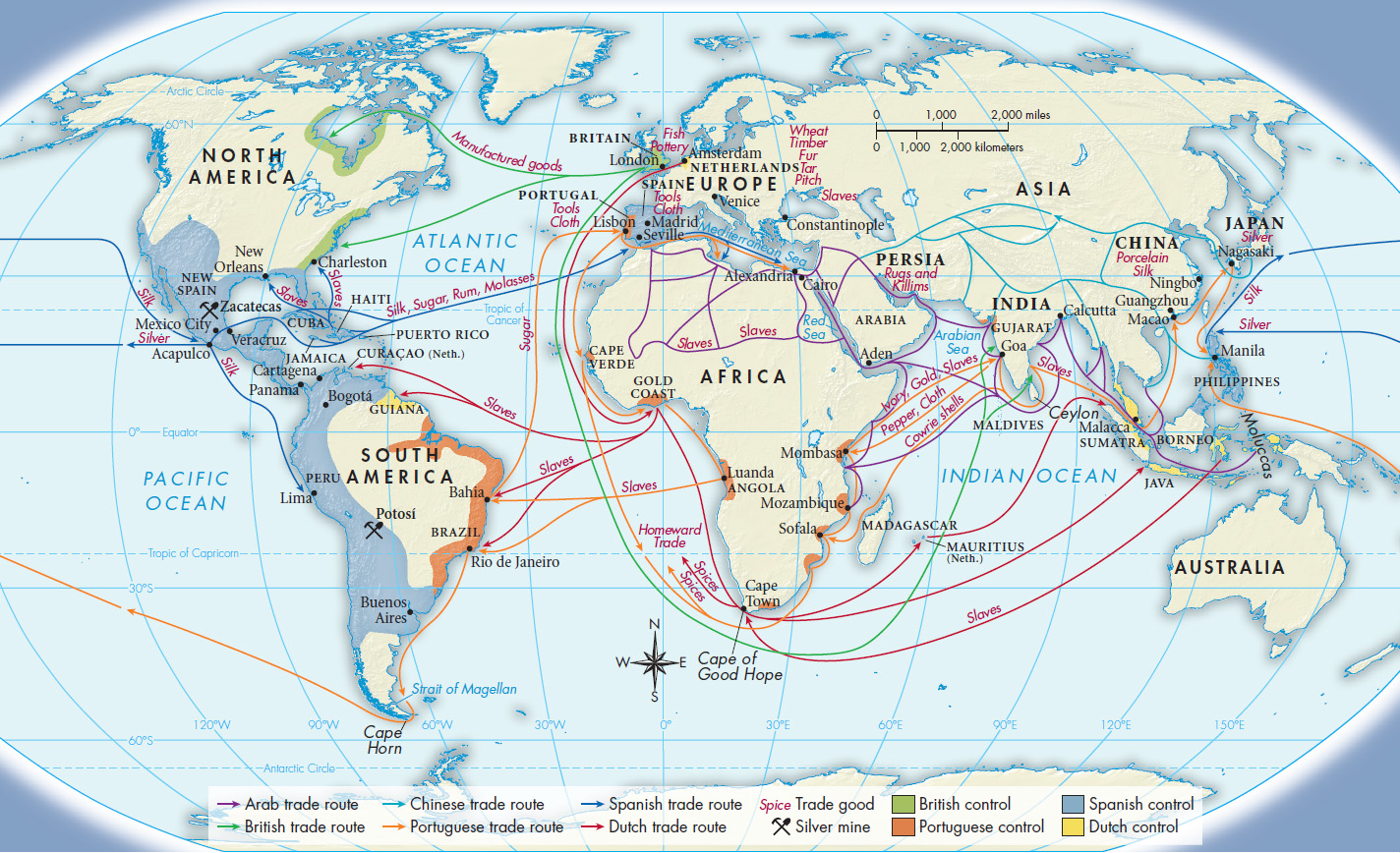Sugar and Slavery
Throughout the Middle Ages slavery was deeply entrenched in the Mediterranean, but it was not based on race; many slaves were white. How, then, did black African slavery enter the European picture and take root in the Americas? In 1453 the Ottoman capture of Constantinople halted the flow of white slaves from the eastern Mediterranean to western Europe. The successes of the Iberian reconquista also meant that the supply of Muslim captives had drastically diminished. Cut off from its traditional sources of slaves, Mediterranean Europe then turned to sub-Saharan Africa, which had a long history of internal slave trading. (See “Individuals in Society: Juan de Pareja.”) As Portuguese explorers began their voyages along the western coast of Africa, one of the first commodities they sought was slaves. In 1444 the first ship returned to Lisbon with a cargo of enslaved Africans; the Crown was delighted, and more shipments followed.

While the first slaves were simply seized by small raiding parties, Portuguese merchants soon found that it was easier to trade with local leaders, who were accustomed to dealing in slaves captured through warfare with neighboring powers. From 1490 to 1530 Portuguese traders brought hundreds of enslaved Africans to Lisbon each year (Map 14.3), where they eventually constituted 10 percent of the city’s population.

In this stage of European expansion, the history of slavery became intertwined with the history of sugar. Originally sugar was an expensive luxury that only the very affluent could afford, but population increases and monetary expansion in the fifteenth century led to increasing demand. Native to the South Pacific, sugar was taken in ancient times to India, where farmers learned to preserve cane juice as granules that could be stored and shipped. From there, sugar crops traveled to China and the Mediterranean, where islands like Crete and Sicily had the warm and wet climate needed for growing sugarcane. When Genoese and other Italians colonized the Canary Islands and the Portuguese settled on the Madeira Islands, sugar plantations came to the Atlantic.
Sugar was a particularly difficult and demanding crop to produce for profit. Seed-stems were planted by hand, thousands to the acre. When mature, the cane had to be harvested and processed rapidly to avoid spoiling, requiring days and nights of work with little rest. Moreover, sugar’s growing season is virtually constant, meaning that there is no fallow period when workers could recuperate from the arduous labor. The demands of sugar production only increased with the invention of roller mills to crush the cane more efficiently. Yields could be augmented, but only if a sufficient labor force was found to supply the mills. Europeans solved the labor problem by forcing first native islanders and then enslaved Africans to provide the backbreaking work.
Sugar gave New World slavery its distinctive shape. Columbus himself, who spent a decade in Madeira, brought the first sugar plants to the New World. The transatlantic slave trade began in 1518 when the Spanish emperor Charles V authorized traders to bring enslaved Africans to the Americas. The Portuguese brought slaves to Brazil around 1550; by 1600 four thousand were being imported annually. After its founding in 1621, the Dutch West India Company, with the full support of the United Provinces, transported thousands of Africans to Brazil and the Caribbean, mostly to work on sugar plantations. In the mid-seventeenth century the English got involved. From 1660 to 1698 the Royal African Company held a monopoly over the slave trade from the English crown.
European sailors found the Atlantic passage cramped and uncomfortable, but conditions for enslaved Africans were lethal. Before 1700, when slavers decided it was better business to improve conditions, some 20 percent of slaves died on the voyage.19 The most common cause of death was from dysentery induced by poor-quality food and water, crowding, and lack of sanitation. Men were often kept in irons during the passage, while women and girls were considered fair game for sailors. To increase profits, slave traders packed several hundred captives on each ship. One slaver explained that he removed his boots before entering the slave hold because he had to crawl over the slaves’ packed bodies.20 On sugar plantations, death rates from the brutal pace of labor were extremely high, leading to a constant stream of new shipments of slaves from Africa.
In total, scholars estimate that European traders embarked over 10 million enslaved Africans across the Atlantic from 1518 to 1800 (of whom roughly 8.5 million disembarked), with the peak of the trade occurring in the eighteenth century.21 By comparison, only 2 to 2.5 million Europeans migrated to the New World during the same period. Slaves worked in an infinite variety of occupations: as miners, soldiers, sailors, servants, and artisans and in the production of sugar, cotton, rum, indigo, tobacco, wheat, and corn.